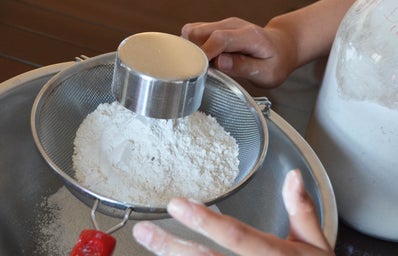I know, I know. The bread craze is so 2020 quarantine pandemic. But in my defense, I was stuck in my house, snowed in, and I really wanted some cheesy garlic bread. Sue me.
In the end, I made said cheesy garlic bread, simit, and dutch oven bread. For 14 days straight, I made some kind of bread creation. Every day. Yeast became my best friend, and I ran through all-purpose flour like nobody’s business.
As promised, here are some tips I’ve picked up from countless YouTube videos, blogs, and recipe sites.
- Put active dry yeast in the fridge once you open it.
This, apparently, will make it last for a few months. Don’t do what I did and use obviously dead yeast, spend all the time kneading and caring for the dough, baking said dough, and ending up with a loaf of bread as dense as a neutron star. I’m not even kidding – this loaf looked like bread squared, and should’ve never existed on this good green Earth.
- Don’t use a metal bowl.
Use glass or wood. The internet says stainless steel is harmless to yeast, but I’ve seen the difference. I’m unsure what it is – heat conduction, ions, or maybe bad vibes. What I do know is that I’ve had much better luck using a glass bowl and a wooden spoon to create my dough.
- Use body temperature water to proof active dry yeast.
Active dry yeast needs “warm” water. I was making bread during the dead of winter, so my fingers were very cold and could not be trusted. Ergo, if you’re making bread just for yourself or your family, you can use your upper lip to test the heat of the water. It should feel like nothing on your skin.
- Use plastic wrap to cover your dough.
I found that, at least in my cold winter home, a towel just didn’t cut it. Moisture escaped my precious dough ball, leaving me with a crust (not good). Plastic wrap provided a good seal to retain moisture and allowed my dough to rise quite nicely.
- Use parchment paper.
I love parchment paper. I will sing its praises till the end of time. Clean-up is non-existent with parchment paper. Simply oil your baking pan, place the parchment paper, and bake the bread. No more scraping off food- you can just rinse and repeat.
- Garlic can only be measured with the heart.
Too many internet recipes will call for stuff like “one to two cloves of garlic.” What a terrible thing. You look at your bread, and you let it tell you how much garlic it needs. Follow your heart and trust your gut.

